Introduction to glaciers#
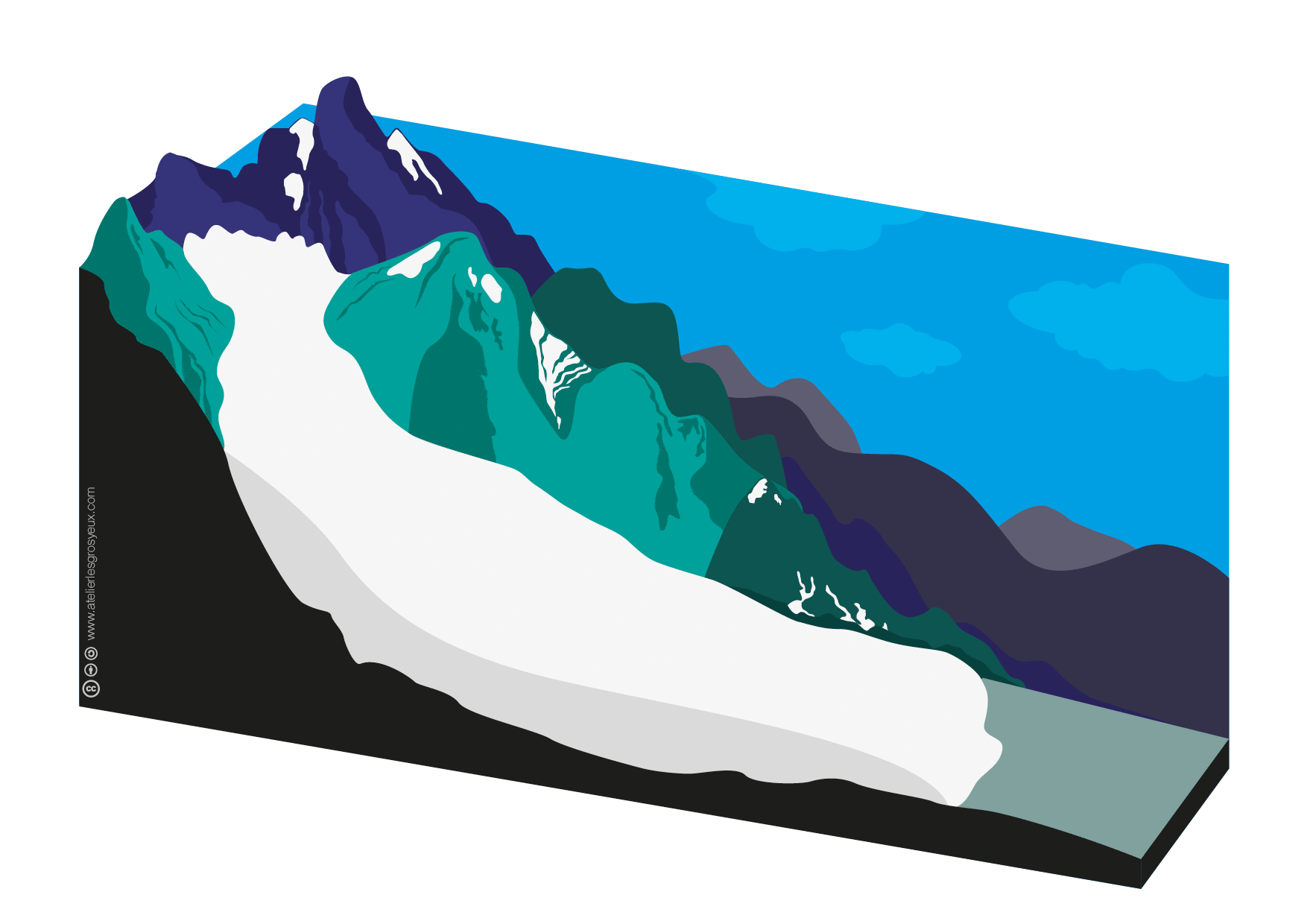
A collection of free glacier graphics that can be used for education and outreach.
License: Creative Commons Attribution-ShareAlike 4.0 International License

Feel free to use / adapt the graphics, but always refer to the original author and share them with a compatible license.
Author: Anne Maussion, Atelier les Gros yeux
This series of graphics was designed for a talk given by Fabien Maussion to a general audience. He used them to explain the concepts of accumulation, ablation, equilibrium line altitude and mass movements in a glacier.
Single images with explanations#
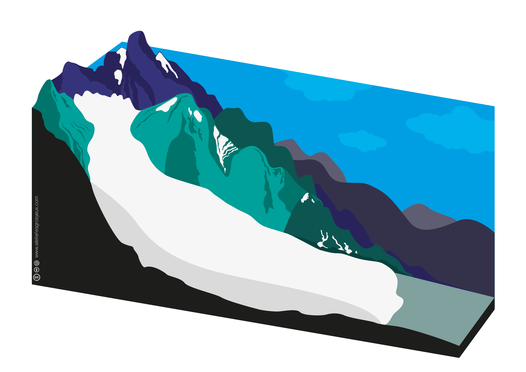
The first image just sets the scene and allows to explain that we are now looking at a typical mountain glacier from a cross-section along the main ice flow.
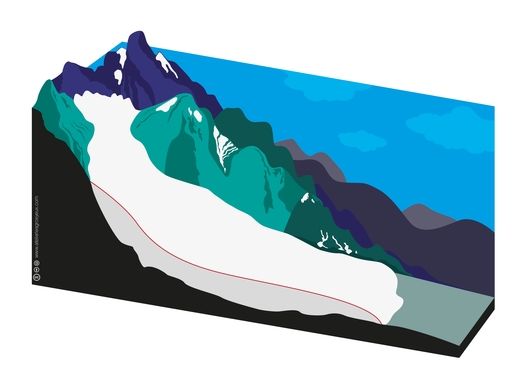
We then announce that we are looking at the processes at the glacier surface first. This helps to bring the focus to it first.
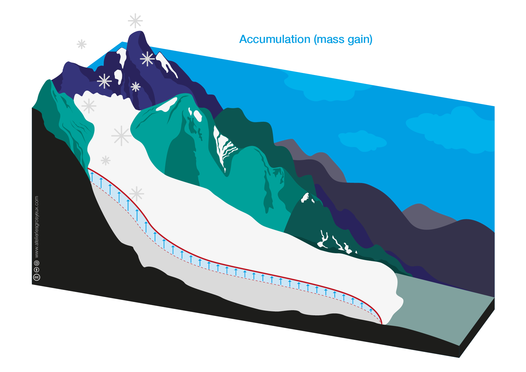
Accumulation: definition, which processes are at play, how you measure it, typical values… The time you want to spend on it is up to you. Note that some snow flakes now appears on the upper left corner!
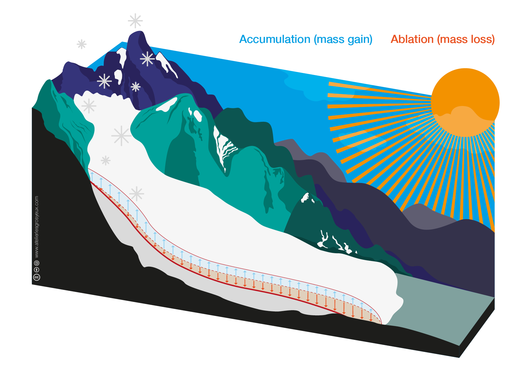
Ablation: definition, which processes are at play, how you measure it, typical values… The time you want to spend on it is up to you. Note that a sun now appears on the upper right corner!
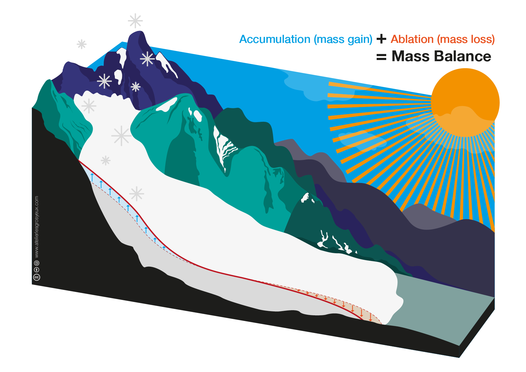
Mass Balance: definition, over which period you measure it, typical values… The time you want to spend on it is up to you. Note that the formula is now complete!
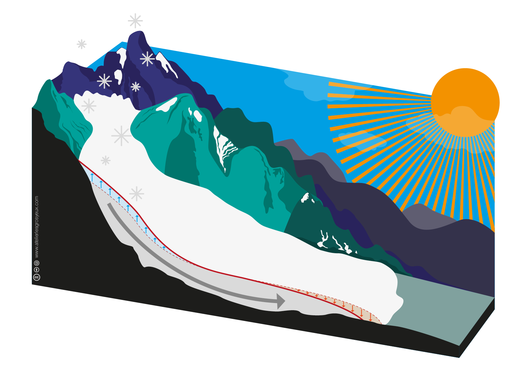
The imbalance between accumulation and ablation is compensated by a movement of ice from top to bottom. If this is where you want to bring your talk to, you can use the mass flux arrow to explain the principles of ice thickness inversion using mass conservation principles.
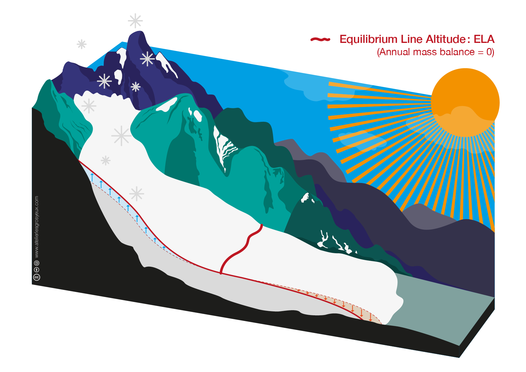
Concept of Equilibrium Line Altitude (ELA).
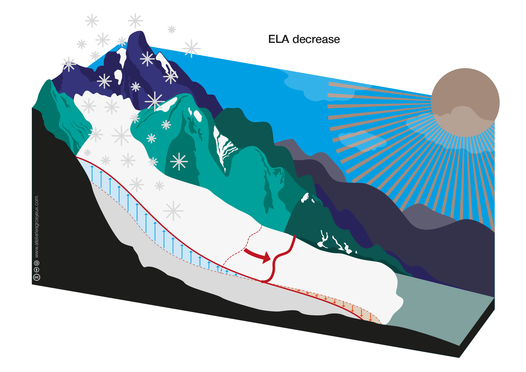
More accumulation and/or less ablation leads to a decrease of the ELA. You might want to highlight the changes in surface mass budget as well as the increased solid precipitation and/or the shaded sun.
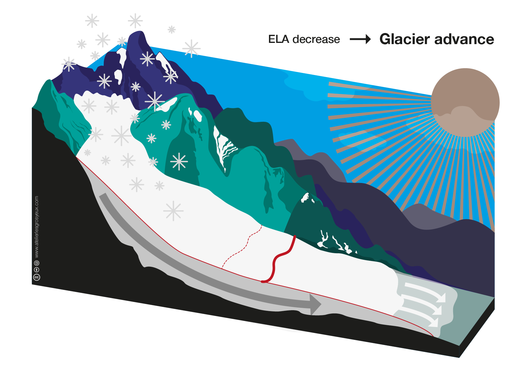
This new imbalance increases the flux of ice through the glacier (hence the wider arrow) and results in a glacier advance. See the response time section below for a companion graphic.
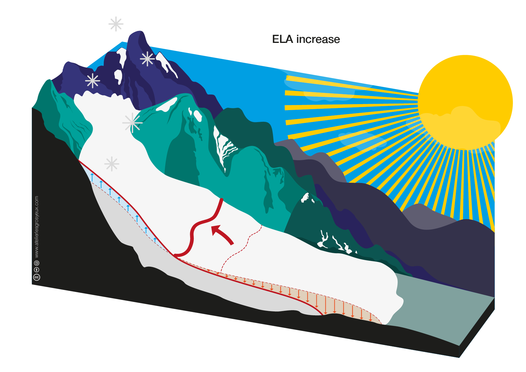
Less accumulation and/or more ablation leads to an increase of the ELA. You might want to highlight the changes in surface mass budget as well as the decreased solid precipitation and/or the stronger sun.
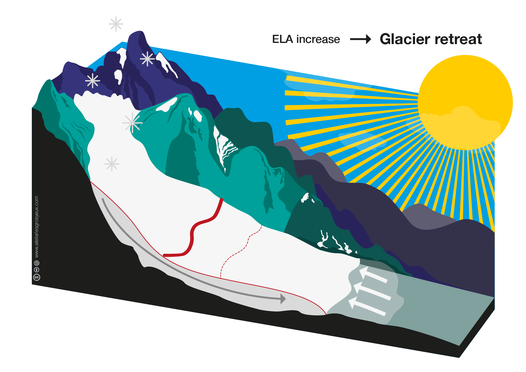
This new imbalance decreases the flux of ice through the glacier (hence the thinner arrow) and results in a glacier retreat. See Glacier as low-pass filters for a companion graphic.
